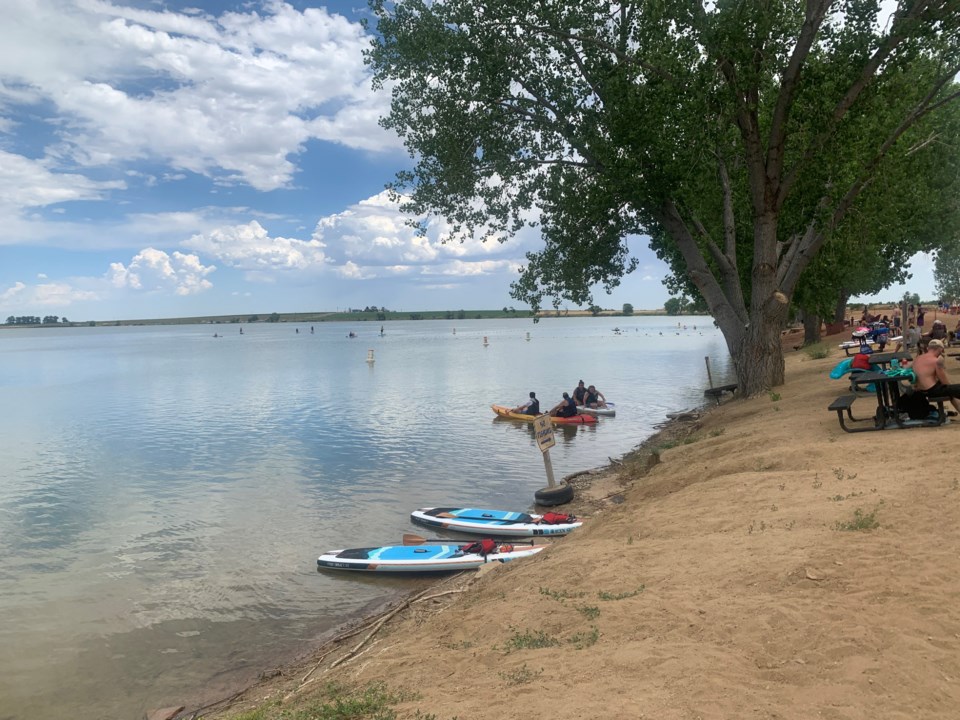Longmont’s air monitoring station at Union Reservoir recorded huge spikes in oil and gas plumes earlier this year, defying a general trend of lowered readings of volatile organic compounds chemicals in the air above the city.
Detlev Helmig of Boulder Atmospheric Innovation Research, or Boulder AIR, told the city council this week that the plumes occurred on Jan. 6 and Feb.1 and were recorded at AIR’s monitoring station at Longmont’s Union Reservoir.
The two spikes lasted about 15 minutes and shot past the air monitoring station’s measurements, Helmig told the council. The readings, he said, were “very remarkable.”
After questioning from Councilmember Polly Christensen, Helmig told the council the plumes included high levels of methane, which were likely caused by oil and gas operations near Union Reservoir. “This was a very clear signature” of oil and gas emissions, he said.
Helmig and Boulder AIR were hired last year under a $560,905 contract to conduct air quality studies near Union Reservoir and Vance Brand Airport. Boulder AIR began collecting data at Vance Band in September 2019 and data collection started at Union Reservoir in December 2019, according to the city.
The AIR station at Vance Brand Airport includes measurements of methane —which is a main constituent of natural gas — as well as CO2 and ozone. The Union Reservoir collects data on several compounds including methane and volatile organic compounds or VOCs.
Helmig told the council that readings at Union Reservoir were mostly low through the summer and fall of 2020 until Jan. 6 and Feb. 1. The spikes were so huge “our system maxed out,” Helmig said, “the measurement levels were so high.”
He pointed out that oil and gas VOCs concentrations remain higher at Union Reservoir compared to other sites, particularly during winter.
Jane Turner, air quality and gas coordinator for Longmont, said in an email that Helmig’s research is designed to help understand air quality and to quantify general oil and gas impacts. “But unfortunately the data cannot be used to determine a specific source of pollution,” Turner said.
Helmig, she said, indicated the spikes had an ‘oil and gas signature’ and that the pollutants originated east/northeast of the monitoring station. “That is all we can definitively say,” Turner said.
AIR sites also measured a “remarkable” air pollution event March 18-21, a span that included the worst air quality in the United States as well as the area north of Denver, Helmig said.
The conditions were promoted by a strong temperature inversion, snow-covered ground and low temperatures. Airflow was also dominated by northeasterly flows during the worst conditions, Helmig said.
Helmig has been criticized by the Colorado Oil and Gas Association for unfairly linking oil and gas in his reports about high VOC levels.
“Dr. Helmig continues to present his agenda-driven research and draw misleading conclusions about emissions and oil and gas activity throughout the Front Range,” Dan Haley, president and CEO of the Oil Colorado Oil and Gas Association, told the Leader in a July 2020 email.



